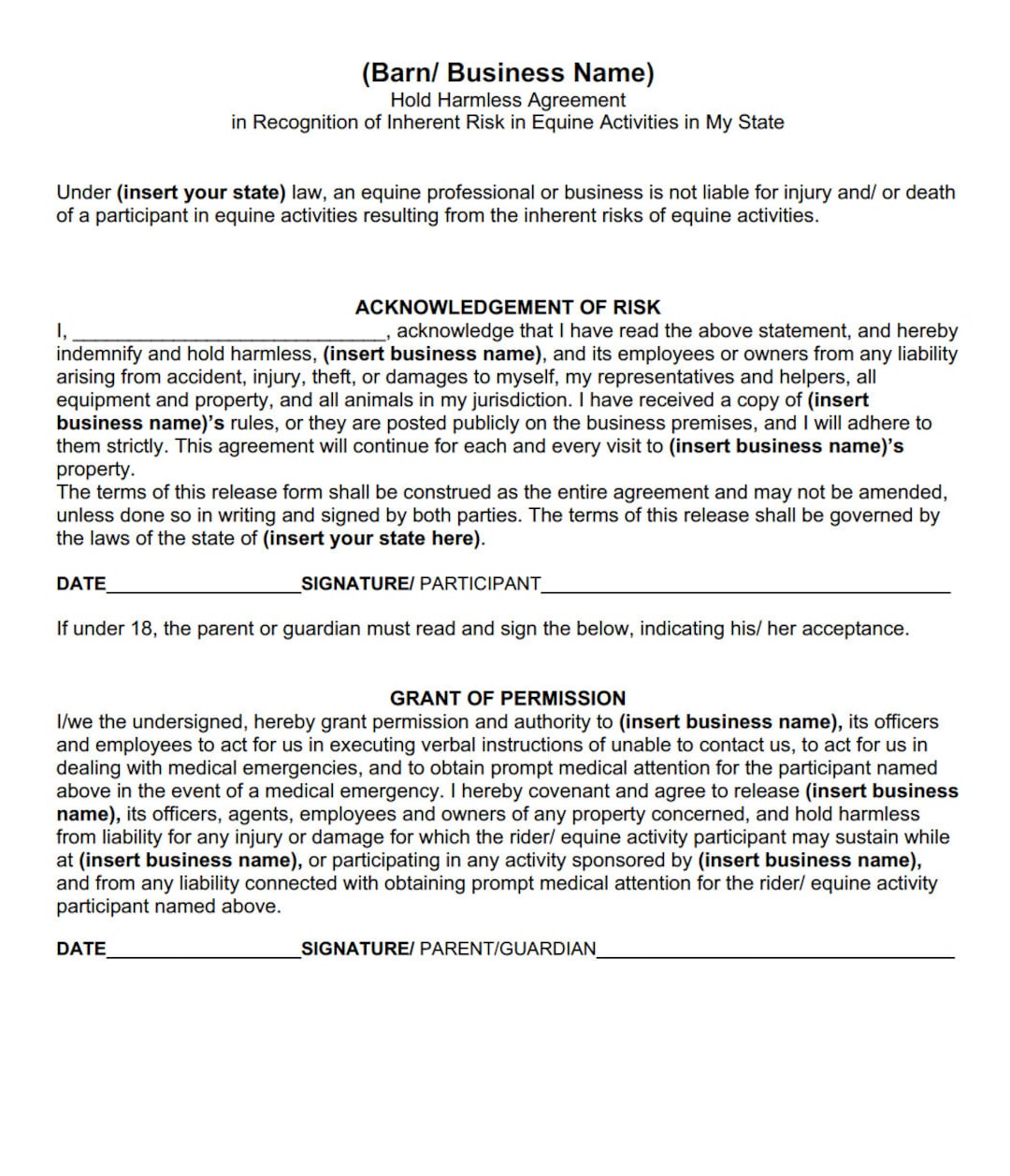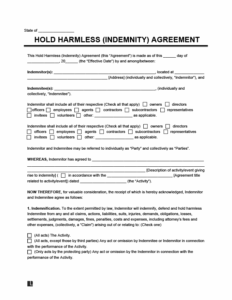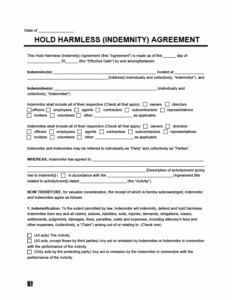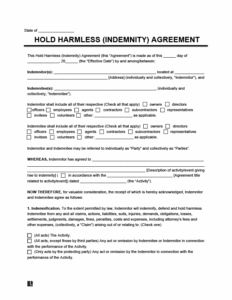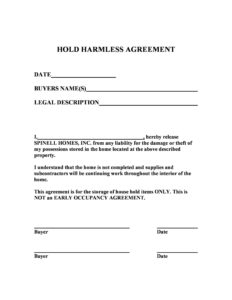Alright, let’s talk horses. Magnificent creatures, right? Whether you’re running a stable, offering riding lessons, or even just letting someone ride your own personal equine companion, you’re probably aware of the inherent risks involved. Horses are large, powerful animals with minds of their own, and accidents can happen in the blink of an eye. That’s where an equine hold harmless agreement comes in – it’s a crucial tool for protecting yourself and your business.
Think of it as a safety net, a legally binding document that outlines the potential risks associated with equine activities and ensures that participants acknowledge and accept those risks. It essentially says, “I understand that riding, handling, or being around horses can be dangerous, and I agree not to hold you liable if something goes wrong.” This isn’t about shirking responsibility, but rather about acknowledging the unpredictable nature of horses and ensuring everyone is on the same page.
In this article, we’ll dive deep into the world of equine hold harmless agreements, exploring their importance, key components, and how an equine hold harmless agreement template can save you time and legal headaches. We’ll also cover some common scenarios where these agreements are essential. Consider this your comprehensive guide to safeguarding your equine-related activities.
Understanding the Equine Hold Harmless Agreement Template: A Detailed Look
An equine hold harmless agreement template is essentially a pre-written document that outlines the terms and conditions under which someone participates in activities involving horses. It’s designed to protect the owner, operator, or anyone else associated with the equine activity from liability in case of an accident or injury. It doesn’t mean you can be negligent and avoid responsibility, but it does offer a layer of protection against claims arising from the inherent risks associated with horses. This template provides a starting point, allowing you to customize it to fit the specific circumstances of your business or situation.
The beauty of a template lies in its convenience and cost-effectiveness. Instead of hiring a lawyer to draft a custom agreement from scratch, you can use a template as a foundation and then modify it to suit your needs. However, it’s crucial to remember that a template is just a starting point. You should always carefully review the agreement and make sure it accurately reflects the specific risks involved in your activities and complies with the laws in your state. It is always advisable to seek legal counsel to ensure complete protection.
A well-drafted equine hold harmless agreement template should include several key elements. First and foremost, it needs to clearly identify all parties involved, including the owner/operator and the participant. It should also provide a detailed description of the activities covered by the agreement, such as riding lessons, trail rides, boarding, or even just being present on the property. The agreement should explicitly state the inherent risks associated with horses, such as being kicked, bitten, or thrown, and acknowledge that these risks cannot be completely eliminated. Most importantly, it should contain a clear and concise waiver of liability, stating that the participant agrees not to hold the owner/operator liable for any injuries or damages that may occur.
Furthermore, the agreement should include provisions for things like insurance, medical emergencies, and dispute resolution. It’s also important to ensure that the agreement is written in plain language that is easy for everyone to understand. Avoid using overly technical legal jargon that could be confusing or misinterpreted. A clear and understandable agreement is more likely to be upheld in court. Also, consider including a section that requires the participant to acknowledge that they have read and understand the agreement before signing it.
Keep in mind that laws vary from state to state, and what’s enforceable in one state may not be in another. It’s essential to adapt the template to comply with local regulations. It’s a worthwhile investment to have an attorney review your final version to ensure it offers the best possible protection under the applicable laws.
Common Scenarios Where an Equine Hold Harmless Agreement is Essential
The need for an equine hold harmless agreement stretches across various situations involving horses. If you offer riding lessons, whether to beginners or experienced riders, a hold harmless agreement is absolutely essential. These agreements protect you if a student falls off a horse and gets injured. It acknowledges the inherent risk and confirms that the student understands and accepts this before participating. Similarly, if you run a horse boarding facility, you should have agreements in place with each horse owner. This covers not only the risks associated with riding but also the potential for injuries that can occur while horses are housed together, such as kicking or biting.
Trail riding is another area where an agreement is vital. The unpredictable nature of trails, combined with the temperament of horses, creates a higher risk of accidents. Weather conditions, uneven terrain, and wildlife encounters can all contribute to unforeseen incidents. A hold harmless agreement here protects you from liability if a rider is injured during a trail ride. Even if you are simply letting a friend or family member ride your horse, having them sign an agreement can provide a level of protection. While you might think it unnecessary among friends, it can prevent misunderstandings and protect your assets if an accident occurs.
Horse shows and competitions also warrant the use of hold harmless agreements. Participants often face risks associated with high-speed maneuvers, jumping, and close proximity to other horses and riders. Organizers of these events should require all participants to sign an agreement to minimize their liability. If you’re involved in equine therapy programs, which often cater to individuals with special needs, an agreement is especially important. The agreement should outline the specific risks involved and ensure that participants or their guardians understand and accept these risks.
Furthermore, if you are selling a horse, consider including a hold harmless clause in the sales agreement. While this won’t protect you from misrepresentation or fraud claims, it can help limit your liability for injuries or damages that occur after the horse has been sold. This is especially important if you have any knowledge of the horse’s temperament or history that could pose a risk to the new owner.
Lastly, remember that even a comprehensive equine hold harmless agreement template is not a substitute for proper safety measures. Always prioritize the safety of your participants by providing adequate instruction, maintaining safe equipment, and properly supervising all equine activities. A combination of safety precautions and a well-drafted agreement is the best way to protect yourself and your business.
Using an equine hold harmless agreement template is a proactive step toward safeguarding your interests in the equine world. While it might seem like extra paperwork, the peace of mind it provides is invaluable. An equine hold harmless agreement template offers crucial protection.
Remember to consult with a legal professional to ensure your specific situation is adequately covered. Taking the time to implement these measures can save you considerable stress and expense in the long run, allowing you to focus on enjoying your passion for horses.
